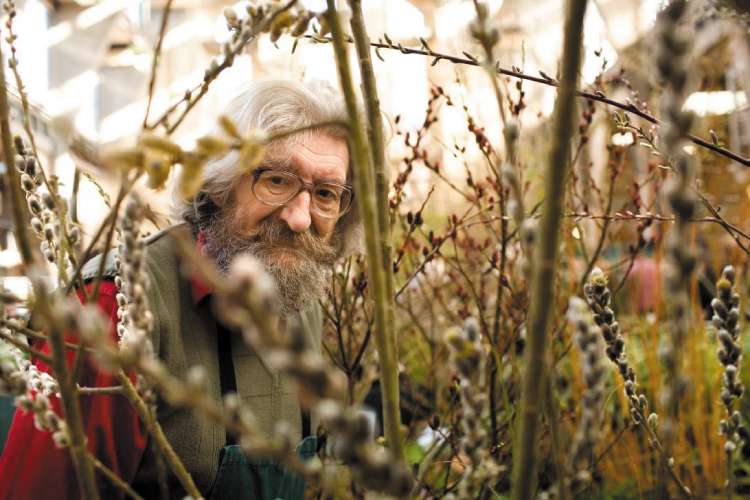The Independent's journalism is supported by our readers. When you purchase through links on our site, we may earn commission.
The willow wizard: Trevor Wood has spent 30 years collecting varieties of just one tree

"There was always a joke around the nursery," says Caroline Wood of the business she started with her husband: "If it has bright, beautiful flowers on it, Trevor won't like it."
Sure enough, Trevor Wood's patch at the Royal Horticultural Society London Flower Show earlier this month wasn't about bright colours or showy display. Rather, it was a glimpse of a wilder world: slim minimalist stems that curled in subtle shades, looking like the work of a Japanese flower arranger.
Wood's passion is willow, and he's devoted the past 30 years to developing a vast collection from around the world. When you see them all massed together, as they were at the show, the variation of colours and shapes is stunning. Some have dark, winey-coloured stems, others are bright yellows and greens.
"He's an obsessive collector," says his wife. "Once he got into them, he was constantly tracking down new varieties and hunting down information on them."
And Wood has increasingly felt the same delight for the trees as her husband: "There was a time I thought willows were boring, but when I saw the more unusual ones, I began to fall in love with them."
The result is a whole field of willow at the couple's home in Devon, where rare cultivars jostle with each other for space. One of the loveliest for bright colour is Salix alba "Britzensis", which streaks a fiery red through a cold spring day. It needs to be cut back every year, as by nature it's a 50ft tree, but this treatment is to the grower's advantage, as the coppicing produces more of the lovely red stems. It looks good combined with Salix alba "Vitellina", a gorgeous limey-yellow, or with Cornus sericea "Cardinal", which has a pinkier stem, the colour of the rosy cheeks of teenage models. There's also Salix daphnoides, with its dark wine-purple stems. And Caroline enthuses about Salix hookeri, one of her favourites: "It has this fascinating branching pattern, likes stags' antlers, and a slight bloom on the bark."
There are amazing differences in the catkins – the willows' flowers – too. "There's something so endearing about catkins," says Wood. "They have this glowing quality, at a time of year when you really want everything to get going again. They can vary from being little and furry, like a young animal, to being sleek and refined. There are some that are yellow and feathery – almost like a baby chick."
For the classiest in catkins, you can't go wrong with "Blue Streak" Salix acutifolia, sometimes called the Siberian violet willow, which makes it sound appropriately aloof. It has a catkin so grey, smooth and shiny it looks as though it's wearing a mink coat, which also ties in with the snooty Russian theme. Then there's Salix gracilistyla "Melanostachys", which has black catkins that look like bear-fur hats.
Willows are not just beautiful plants: they may yet save the world. They are so fast-growing – putting on yards of stem and basketfuls of leaves in a single season – that they are a plantation tree of choice for biomass boilers.
For that reason, they are not terribly suitable for small gardens. But that's not to say you can't enjoy growing them for a short while from cut twigs. "Every year I put a few stems in water on the kitchen window sill," Wood enthuses. "I just love watching the roots develop."
Over the next few weeks, in the run-up to Easter, you'll see willow cuttings everywhere – in your local flower shops, even on sale by the bucketload at railway stations. But your best bet is to go and look at them in full bloom to choose which you like best. You'll enjoy being seduced by their many subtle charms, too. When I said to Caroline that her husband had obviously managed to convert her, she replied, smiling: "Oh no, the willows managed that on their own."
The next RHS London Flower Show is 11-12 March, RHS Horticultural Halls, Greycoat St, London SW1, www.rhs.org.uk
Join our commenting forum
Join thought-provoking conversations, follow other Independent readers and see their replies
Comments